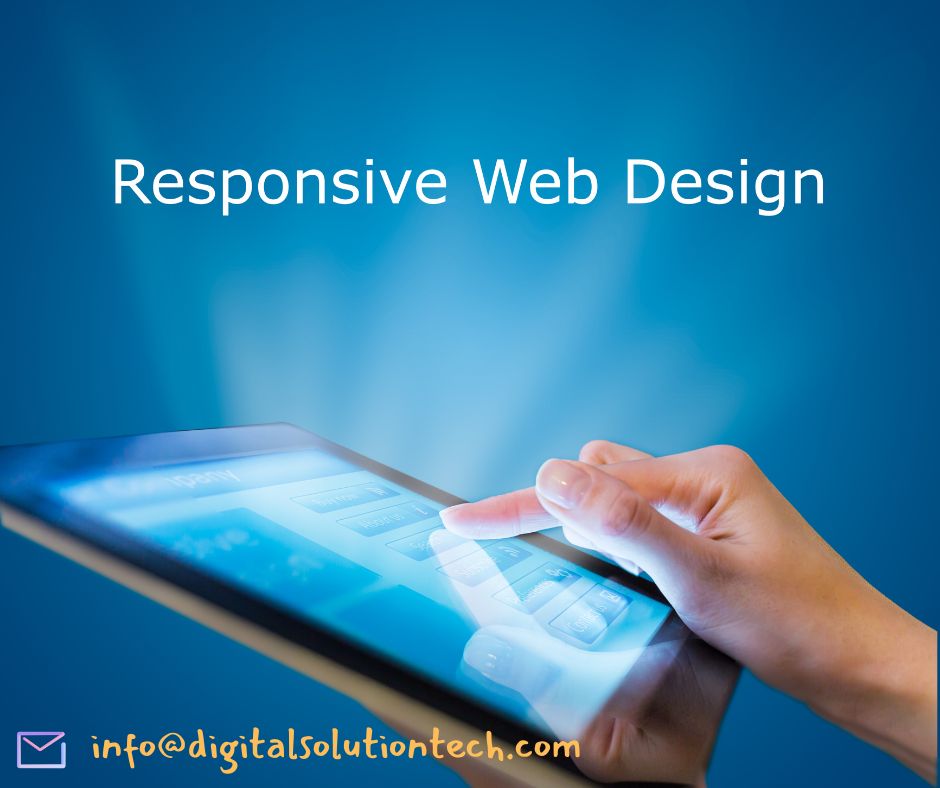In today’s digital era, responsive website design is no longer an option; it’s a necessity. With the growing number of mobile users, businesses must ensure that their websites look perfect on all devices. A responsive design improves user experience, boosts SEO rankings, and increases engagement.
⭐What Is Responsive Website Design?
Responsive website design refers to a development approach that enables websites to adapt seamlessly to different screen sizes. Whether a user accesses the site from a desktop, tablet, or smartphone, the layout and content adjust accordingly. As a result, this flexibility ensures smooth navigation, better readability, and an enhanced browsing experience.

⭐Why Is Responsive Website Design Important?
-
Better User Experience
A responsive website provides an intuitive and seamless experience across all devices. Users don’t need to zoom in or scroll sideways, making navigation effortless. As a result, they stay longer on the site and are more likely to engage with the content. -
Improved SEO Performance
Search engines, especially Google, prioritize mobile-friendly websites. Responsive designs improve page loading speed and reduce bounce rates, positively impacting search rankings. Since mobile-friendliness is a ranking factor, a responsive site enhances online visibility. -
Increased Conversion Rates
A mobile-friendly website encourages users to take action. Whether making a purchase, filling out a form, or subscribing to a newsletter, a seamless experience boosts conversions. Not to mention, customers trust websites that function smoothly on all devices. -
Cost-Effective Solution
Instead of maintaining separate desktop and mobile versions, a responsive website consolidates everything into one. As a result, businesses save time, reduce development costs, and simplify website management. -
Faster Loading Speed
Moreover, a well-optimized responsive design ensures quick loading times. Since speed is crucial, slow websites tend to frustrate users and lead to higher bounce rates. Therefore, optimizing images, using efficient coding, and implementing caching techniques further enhance performance.
⭐Key Elements of Responsive Website Design
-
Flexible Grid Layouts
A responsive website uses a grid-based layout that adjusts to different screen sizes. In this way, it ensures consistent design and proper alignment of elements. -
Fluid Images
Since images automatically resize based on screen resolution, they do not get distorted or cropped. As a result, visuals remain sharp and engaging. -
Media Queries
CSS media queries allow developers to apply different styles based on device characteristics. In turn, these queries help in modifying fonts, layouts, and elements to fit various screens. -
Mobile-First Approach
Designing for smaller screens first ensures that the website functions well on mobile devices before scaling up to larger screens. In this way, it prioritizes essential elements and simplifies navigation. -
Optimized Typography
Readability is crucial for user engagement. Therefore, using scalable fonts, appropriate line spacing, and contrast improves the overall reading experience. -
Touch-Friendly Elements
Furthermore, buttons, links, and interactive elements must be optimized for touch screens. Large, well-spaced buttons prevent accidental clicks and enhance usability.
⭐Best Practices for Implementing Responsive Website Design
-
Use a Mobile-First Strategy
To begin with, designing for mobile screens first ensures that the website remains functional and user-friendly across all devices. Not only does this approach prioritize core features, but it also eliminates unnecessary elements -
Prioritize Page Speed Optimization
Compressing images, using a content delivery network (CDN), and minimizing HTTP requests improve loading speed. In turn, a faster website leads to better user satisfaction and SEO performance. -
Test Across Multiple Devices
Regular testing on various screen sizes helps identify usability issues. Moreover, tools like Google’s Mobile-Friendly Test and BrowserStack assist in checking responsiveness. -
Enable Adaptive Navigation
Since simplified navigation menus improve usability, using collapsible menus or hamburger icons enhances the browsing experience on smaller screens. -
Focus on Accessibility
Additionally, websites must be accessible to all users, including those with disabilities. Implementing keyboard navigation, alt text for images, and proper color contrast improves inclusivity.
⭐Common Mistakes to Avoid in Responsive Website Design

-
Ignoring Mobile Users
Many businesses still neglect mobile optimization, which ultimately leads to a poor experience and increased bounce rates. To avoid this, prioritizing mobile users is essential. -
Overloading the Website with Content
Since cluttered layouts make navigation difficult, keeping the design clean and minimal enhances readability. -
Using Non-Responsive Media
Videos, images, and embedded elements must scale properly. Otherwise, unoptimized media can slow down the website and affect performance. -
Neglecting Touchscreen Optimization
Small buttons and links can frustrate users. Therefore, ensuring touch-friendly interactions improves engagement.
⭐Future Trends in Responsive Website Design
-
AI-Powered Personalization
Artificial intelligence helps tailor user experiences based on behavior and preferences. As a result, AI-driven designs enhance engagement and conversions. -
Dark Mode Compatibility
Many users prefer dark mode for better readability. Consequently, implementing dark mode support improves usability. -
Voice Search Optimization
Since voice search is growing rapidly, websites must adapt. Structuring content with natural language and featured snippets enhances discoverability. -
Augmented Reality (AR) Integration
AR technology is transforming user experiences. Responsive designs incorporating AR elements provide interactive engagement. -
Progressive Web Apps (PWAs)
PWAs combine the best of websites and mobile apps. Not only do they offer offline access, but they also provide push notifications and improved performance.
⭐Conclusion
A well-structured responsive website design enhances user experience, improves SEO rankings, and increases conversions. With mobile traffic rising, businesses must adapt to provide seamless interactions across all devices. By implementing best practices and avoiding common pitfalls, companies can create engaging and accessible websites. Ultimately, investing in a responsive design today ensures long-term success in the digital world.



